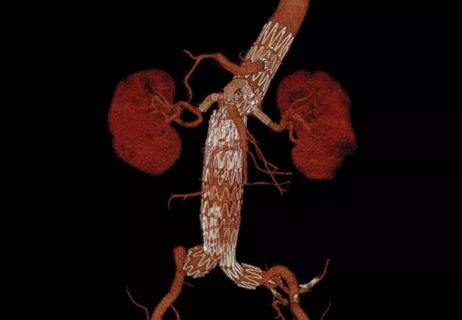Persistent low-grade inflammation appears to trigger heart disease

A retrospective chart review conducted by Cleveland Clinic researchers found that patients with celiac disease were twice as likely as the general population to have coronary artery disease (CAD). The increased risk was seen in patients under age 65, as well as in those age 65 and older.
Cleveland Clinic is a non-profit academic medical center. Advertising on our site helps support our mission. We do not endorse non-Cleveland Clinic products or services. Policy
“Younger celiac patients with fewer comorbidities still had a higher prevalence of CAD, compared to the control group. This indicates a direct relationship between celiac disease and CAD,” says Cleveland Clinic hospital medicine physician Deepak Pattanshetty, MD, who co-authored the study with Rama Gajulapalli, MD. Their research was presented at the American College of Cardiology 2014 Scientific Sessions.
The researchers reviewed the electronic health records of patients in 13 different healthcare systems. Out of 22,385,340 patients, 24,530 were diagnosed with celiac disease. The remaining 22,360,810 patients served as controls.
The prevalence of CAD among patients with celiac disease was 9.5 percent—nearly twice that of controls, at 5.6 percent. A similar ratio was seen among celiac patients younger than 65, with 4.5 percent having CAD, compared with 2.4 percent of young controls.
Other clinically significant findings included a higher prevalence of atrial fibrillation (2.9 percent vs 1.4 percent) and a 1.4 percent increased risk of cerebrovascular accidents in patients with celiac disease.
The association between celiac disease and coronary artery disease is likely mediated by inflammation. Chronic inflammation caused by excess serum acute-phase proteins, cytokines and cell-adhesion molecules—particularly C-reactive protein and interleukin-6—has been implicated in the pathogenesis of atherosclerosis. Celiac disease is a chronic autoimmune disease associated with elevated serum inflammatory markers. Increased risk of CAD has also been reported in other inflammatory disorders such as inflammatory bowel disease and rheumatoid arthritis.
In celiac disease, gluten consumed through foods containing wheat, barley, rye and oats is thought to trigger an inflammatory response in the small intestine. It is unknown whether the patients in this study developed CAD while avoiding gluten or before their gluten sensitivity was discovered.
Further prospective studies are needed to study the association in detail. The next step, say the researchers, is to determine whether avoiding gluten lowers the risk of CAD.
Regardless, one in 133 people in the United States is thought to have celiac disease. The estimate may be conservative, since a disproportionate number of people with the disease may go undiagnosed or be misdiagnosed with lactose intolerance or irritable bowel syndrome. Due to the strong association of celiac disease with CAD, physicians are advised to learn the symptoms of celiac disease and treat patients aggressively to lower their cardiovascular risk.
“It is important to identify patients with risk factors for CAD to help with primary prevention of a coronary event. Our study suggests that celiac disease is a risk factor for CAD at any age and should be considered on par with traditional risk factors, such as hypertension and diabetes,” says Dr. Pattanshetty.

Further acute testing not needed if ECG and high-sensitivity troponin are negative

Scott Cameron, MD, PhD, also brings wide-ranging research interests to bear

Pioneering U.K. vascular surgeon joins Cleveland Clinic

AHA statement is first comprehensive document on perioperative stroke reduction

Recognition reflects prioritization of long-term patient outcomes

Recommendations help distinguish exercise-induced remodeling from pathology

JACC review highlights factors unique to women, ways to tailor management

Pushing the envelope in ablation of atrial fibrillation, ventricular tachycardia